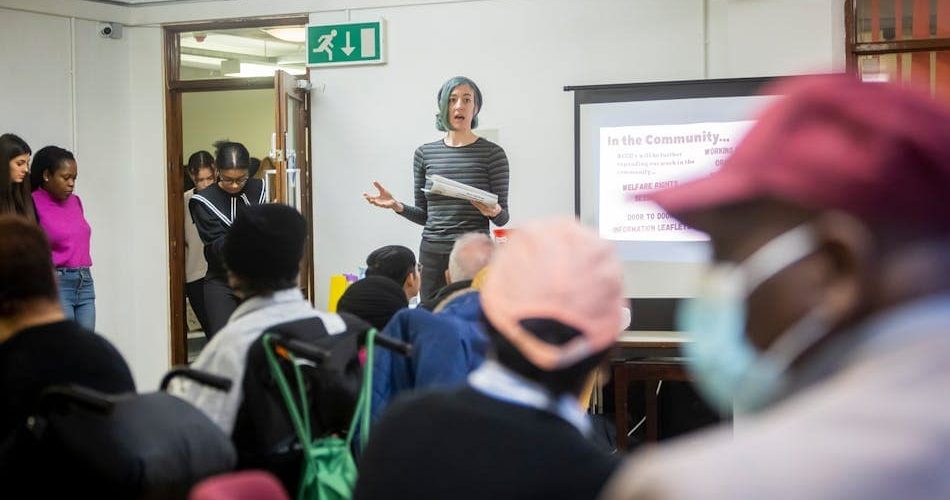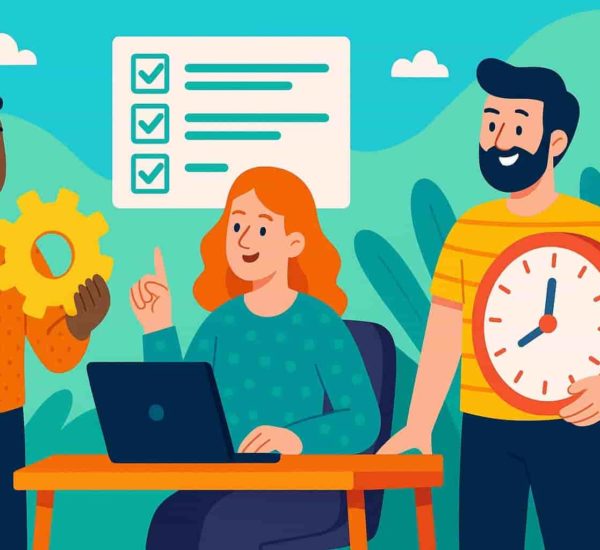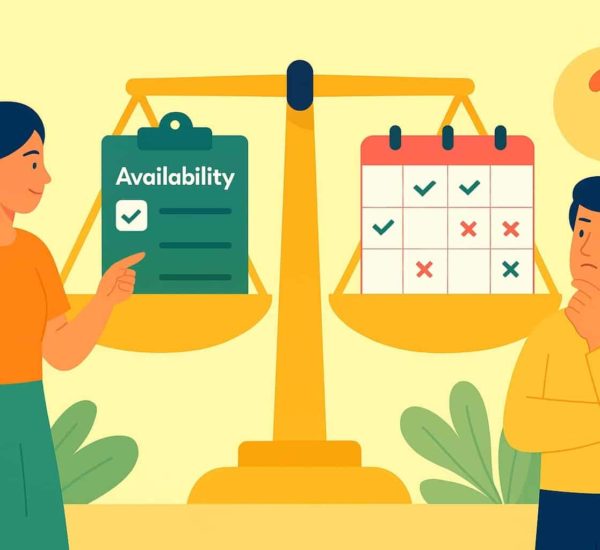Workplaces today are more diverse than ever—not just in culture, but in generational diversity. With Boomers, Gen X, Millennials, and Gen Z working side by side, differences in communication styles, work expectations, and technology preferences can sometimes lead to friction, misunderstandings, and disengagement. For HR leaders and People & Culture teams, managing a multigenerational workforce isn’t just about avoiding conflict—it’s about leveraging diverse perspectives to drive innovation, collaboration, and productivity. But how do you create cross-generational engagement that ensures each generation feels valued, heard, and aligned with company goals?
This guide explores practical strategies for bridging generational gaps in the workplace, helping HR professionals foster a culture where all employees—regardless of age—can thrive.
What Is Generational Diversity in the Workplace?
Generational diversity refers to having employees from multiple age groups working together in the same organization. Today’s workforce is made up of four distinct generations, each bringing unique perspectives, skills, and expectations to the workplace:
- Baby Boomers (Born 1946–1964): Experienced professionals who value stability, loyalty, and traditional corporate structures.
- Generation X (Born 1965–1980): Independent, adaptable employees who bridge the gap between older and younger workers.
- Millennials (Born 1981–1996): Tech-savvy, purpose-driven professionals who thrive on collaboration and work-life balance.
- Generation Z (Born 1997–2012): Digital natives who expect flexibility, fast communication, and strong company values.
Why Generational Diversity Matters
A multigenerational workforce can be a huge competitive advantage when managed effectively. Different generations bring a variety of viewpoints, problem-solving approaches, and skill sets that can drive:
- Stronger Innovation: Diverse experiences fuel creative solutions and fresh ideas, helping businesses stay ahead in competitive industries.
- Better Decision-Making: A mix of perspectives leads to more well-rounded strategies and fewer blind spots.
- Improved Employee Engagement: When employees of all ages feel heard and valued, workplace morale and retention rates improve.
- Enhanced Knowledge Sharing: Older employees bring institutional knowledge, while younger workers introduce new technologies and modern workflows.
Organizations that prioritize cross-generational engagement create a more inclusive and adaptable culture, benefiting both employees and business outcomes.
Challenges of Managing a Multigenerational Workforce
While generational diversity brings valuable perspectives and strengths to the workplace, it also creates challenges that HR leaders and managers must navigate carefully. Differences in communication preferences, work expectations, and attitudes toward technology can lead to misunderstandings, frustration, and disengagement if not properly addressed.
1. Communication Barriers
Each generation has distinct preferences when it comes to communication:
- Boomers and Gen X tend to favor emails, phone calls, and structured meetings for professional discussions.
- Millennials and Gen Z often prefer instant messaging tools like Slack, Teams, or texting, valuing speed and efficiency.
This disconnect can lead to miscommunication, delays, and even workplace friction if employees perceive different communication styles as unprofessional or inefficient.
2. Differing Work Expectations and Values
Workplace priorities vary significantly across generations:
- Boomers and some Gen X employees often emphasize stability, loyalty, and traditional career progression.
- Millennials and Gen Z prioritize flexibility, work-life balance, and purpose-driven work over long-term tenure.
These differences can create tension in work policies (e.g., remote work vs. in-office culture), expectations around promotions, and even attitudes toward workplace hierarchy.
3. Technology Adoption and Digital Fluency Gaps
Technology is essential to modern work, but not all generations adopt it at the same pace:
- Boomers and some Gen Xers may be slower to adapt to new digital tools and workflows, preferring traditional methods.
- Millennials and Gen Z are digital natives, often expecting seamless integration of the latest technology into their work.
This gap can result in frustration, inefficiencies, and resistance to change, especially when companies implement new software without proper training or support.
4. Different Approaches to Feedback and Recognition
Employee expectations around feedback and performance reviews vary:
- Boomers and Gen X generally prefer structured, periodic performance reviews with formal discussions.
- Millennials and Gen Z expect frequent, real-time feedback and recognition through informal check-ins and digital tools.
Without a balanced approach, older employees might feel micromanaged, while younger employees may feel ignored or undervalued.
5. Workplace Culture and Interpersonal Dynamics
Each generation brings unique workplace attitudes that can sometimes clash:
- Boomers and Gen X may view younger employees as less committed or lacking patience, while
- Millennials and Gen Z might see older colleagues as resistant to change or lacking innovation.
This can create interpersonal friction, generational stereotypes, and reduced collaboration if left unaddressed.
6. Career Progression and Leadership Development Differences
- Boomers and Gen X typically followed linear career paths, climbing the corporate ladder over time.
- Millennials and Gen Z value skill-based growth, lateral moves, and leadership opportunities at a faster pace.
Without clear career development strategies that cater to both long-term stability seekers and rapid growth-driven employees, organizations risk losing top talent.
How to Overcome Cross-Generational Engagement Challenges
Successfully managing a multigenerational workforce requires a thoughtful approach that fosters inclusion, adaptability, and collaboration. By implementing targeted strategies, organizations can turn generational diversity into a competitive advantage rather than a source of friction.
1. Create a Multi-Channel Communication Strategy
To bridge communication gaps, companies should offer multiple communication channels that cater to different preferences:
✅ Use digital tools (Slack, Microsoft Teams) for quick updates and real-time collaboration—ideal for Millennials and Gen Z.
✅ Maintain traditional formats (email, phone, in-person meetings) for employees who prefer structured discussions—important for Boomers and Gen X.
✅ Encourage flexibility—allow employees to choose their preferred communication method while ensuring clarity and consistency across teams.
📌 Tip: Offer training on digital communication etiquette to help all generations navigate messaging platforms effectively.
2. Align Work Expectations Through Flexible Policies
Instead of enforcing a one-size-fits-all work structure, companies should adopt flexible work models that balance different generational needs:
✅ Hybrid and remote work options support Millennials and Gen Z, who prioritize work-life balance.
✅ Structured career paths with clear progression plans help Boomers and Gen X feel secure in their long-term growth.
✅ Flexible benefits and incentives (e.g., wellness programs, mental health days) accommodate diverse employee needs.
📌 Tip: Conduct regular employee feedback surveys to ensure that workplace policies evolve with workforce expectations.
3. Foster Cross-Generational Engagement and Collaboration
Encouraging knowledge-sharing across generations helps bridge skill gaps and promote mutual respect:
✅ Reverse mentoring programs pair younger employees with senior colleagues to exchange technical skills and institutional knowledge.
✅ Cross-generational teams enable employees to collaborate on projects, benefiting from diverse viewpoints and expertise.
✅ Employee resource groups (ERGs) focused on professional development can connect employees across age groups.
📌 Tip: Encourage managers to facilitate informal coffee chats or networking events to strengthen generational bonds.
4. Personalize Feedback and Recognition Approaches
Since different generations have unique expectations around feedback, managers should tailor their performance review strategies:
✅ Offer real-time feedback for Millennials and Gen Z, who value immediate recognition.
✅ Maintain structured performance reviews for Boomers and Gen X, who prefer formal evaluations.
✅ Use digital recognition platforms (e.g., Bonusly, Kudos) to ensure appreciation is visible and accessible to all employees.
📌 Tip: Encourage a culture of peer recognition where employees can publicly acknowledge colleagues’ contributions across generations.
5. Provide Technology Training and Digital Inclusivity
To reduce the technology adoption gap, organizations should:
✅ Offer hands-on training for employees who may struggle with new digital tools.
✅ Encourage a learning mindset by making tech education an ongoing process, not just a one-time onboarding session.
✅ Select user-friendly platforms that cater to all employees, ensuring accessibility and ease of use.
📌 Tip: Assign tech ambassadors within teams who can help colleagues navigate new software tools without frustration.
6. Develop Inclusive Career Growth Opportunities
Organizations should create career development plans that support all generations:
✅ Boomers and Gen X should have access to leadership training and succession planning.
✅ Millennials and Gen Z should be offered upskilling, lateral growth, and fast-track leadership opportunities.
✅ Provide a mix of structured promotions and skill-based mobility to accommodate both long-term career builders and fast-paced learners.
📌 Tip: Implement individualized career coaching to help employees map out their professional growth according to their goals.

The Benefits of Cross-Generational Engagement
Embracing a multigenerational workforce offers numerous advantages that can significantly enhance organizational performance. Here are some well-researched benefits:
1. Diverse Perspectives and Innovation
Each generation brings unique experiences and viewpoints, fostering creativity and innovation. This diversity enables businesses to solve problems more effectively and adapt to changing markets, as highlighted in a CTO Magazine study.
2. Enhanced Knowledge Sharing
Older employees contribute in-depth knowledge and industry experience, while younger workers offer fresh perspectives and digital proficiency. This blend facilitates comprehensive knowledge sharing, leading to increased productivity, according to SHRM research.
3. Improved Employee Engagement and Retention
A multigenerational workforce promotes an inclusive environment where employees feel valued, leading to higher engagement and reduced turnover. Organizations that leverage the strengths of all age groups create harmonious workplaces, as discussed in a Harvard Business report.
4. Better Decision-Making
Combining the analytical skills of experienced workers with the innovative approaches of younger employees leads to more robust decision-making processes. This cognitive diversity enhances enterprise agility, as noted in SHRM’s insights.
5. Economic Growth
Investing in a multigenerational workforce can boost economic growth. Studies indicate that embracing age diversity in the workplace can lead to significant increases in GDP per capita over time, as reported by the World Economic Forum.
By recognizing and harnessing these benefits, organizations can create a dynamic and resilient workforce poised for sustained success.
Real-World Examples of Cross-Generational Engagement & Success
Many organizations have discovered that embracing generational diversity leads to stronger collaboration, innovation, and overall business success. Here are a few real-world examples of companies that have leveraged their multigenerational workforce effectively:
1. IBM: Fostering a Multigenerational Workplace
IBM has implemented various mentorship programs to bridge generational gaps and promote knowledge sharing among employees. The company emphasizes the importance of flexible work arrangements and continuous learning to accommodate the diverse needs of its workforce.
2. Marriott International: Commitment to Employee Development
Marriott International invests significantly in training and development programs tailored for employees at all career stages. By offering leadership training and embracing digital tools, Marriott ensures that both new and seasoned employees have opportunities for growth, contributing to high retention rates and a robust organizational culture. citeturn0search7
These examples demonstrate that organizations prioritizing generational diversity and tailored development programs can foster inclusive cultures and achieve sustained success.
3. Google: Reverse Mentorship in Action
Google recognizes that the tech industry is rapidly evolving, and keeping up requires a two-way learning process. The company has implemented reverse mentoring programs, where younger employees coach senior executives on emerging technologies and digital trends. This initiative has improved cross-generational collaboration and digital transformation, as discussed in MIT Sloan Management Review.
These examples illustrate that companies that invest in cross-generational engagement not only strengthen workplace culture but also drive long-term business success.
5. Common Myths About Multigenerational Workforces (Debunked!)
Misconceptions about different generations in the workplace can lead to biases, poor management decisions, and unnecessary conflicts. Let’s bust some of the most common myths with research-backed insights.
Myth #1: Older Employees Resist Change
🚫 The Reality: While it’s true that younger generations are digital natives, studies show that baby boomers and Gen X are highly adaptable—when given the right support. According to Harvard Business Review, older employees embrace new technologies when they see clear value and receive proper training.
Myth #2: Gen Z and Millennials Lack a Strong Work Ethic
🚫 The Reality: Many assume younger employees are “lazy” or “entitled,” but research shows they simply prioritize efficiency, flexibility, and meaningful work. A Deloitte study found that Gen Z and millennials are highly driven, especially when they feel aligned with a company’s mission.
Myth #3: Different Generations Can’t Work Well Together
🚫 The Reality: Successful companies leverage generational differences as a strength. A report by PwC found that cross-generational teams outperform homogenous ones, as they bring a mix of experience, creativity, and fresh perspectives.
Myth #4: Young Professionals Only Want Remote Work
🚫 The Reality: While flexibility is essential, studies show that many Gen Z and millennials still value in-person collaboration. A Microsoft report highlights that younger employees crave mentorship and networking, which often happens best in hybrid or office settings.
Myth #5: Age Diversity Only Matters for Compliance
🚫 The Reality: Companies that actively foster multigenerational workforces see higher productivity, stronger innovation, and lower turnover rates. A Boston Consulting Group (BCG) study found that companies with diverse leadership—including age diversity—deliver 19% higher revenue from innovation.
6. Quick Self-Assessment: Is Your Workplace Multigenerational-Friendly?
Want to know if your workplace truly supports generational diversity? Use this quick HR-friendly checklist to diagnose gaps and take action!
✅ Multigenerational Engagement Checklist
✔️ Hiring & Onboarding: Does your organization actively recruit employees across all age groups?
✔️ Mentorship & Training: Do you offer mentorship programs that encourage knowledge-sharing between generations?
✔️ Flexible Work Options: Are you accommodating different work preferences (e.g., remote, hybrid, in-office)?
✔️ Leadership Development: Do all generations have equal access to career growth opportunities?
✔️ Workplace Technology: Are digital tools and systems inclusive and accessible for employees of all ages?
✔️ Communication Channels: Do you use a mix of communication styles (email, chat apps, meetings) to engage everyone?
✔️ Culture & Inclusion: Do employees of all generations feel valued and heard in workplace decisions?
If you checked five or more of these, congratulations—your workplace is likely multigenerational-friendly! If not, here are some quick next steps:
Next Steps to Improve:
🔹 Launch a Reverse Mentorship Program – Help younger and older employees learn from each other.
🔹 Offer Generational Sensitivity Training – Educate managers on how to engage and support different age groups.
🔹 Rethink Your Work Policies – Create flexible work arrangements that accommodate all employees.
🔹 Measure & Adjust – Regularly collect feedback on generational inclusivity and make improvements.
Embracing generational diversity isn’t just about inclusion—it’s a strategic advantage that drives innovation, collaboration, and long-term business success.




